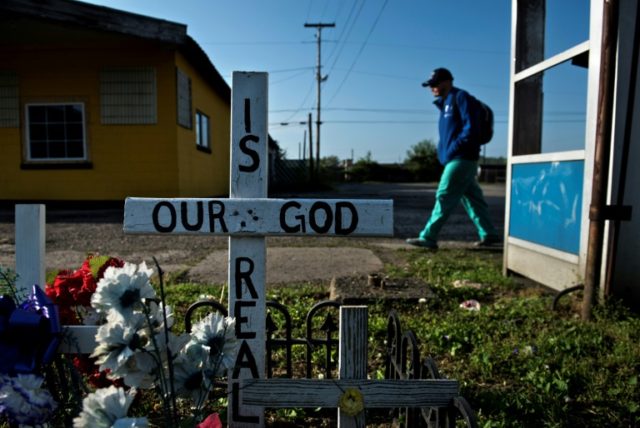Economist Angus Deaton and Princeton University Professor Anne Case told the Wall Street Journal that the opioid crisis, alcoholism, and suicide continue to aggravate the American white working class mortality rate.
Dr. Deaton suggested that the country’s white community split into two camps: white Americans with bachelor’s degrees continue to thrive, while American whites without a bachelor’s degree face increasingly dire circumstances.
Dr. Case explained that America’s white working class continues to face higher mortality rates through suicide, drug overdose, and alcoholism.
Case told the Wall Street Journal:
I think there are several answers to that. Mortality rates for suicide, for drug overdose, for alcoholism are rising for people without a college degree. Those are the big increases that we’re seeing, and it isn’t just about the financial crisis. This started back as far as we can break out education in death certificates, which is 1990. It has been a slow, steady trend up in all three of those for people without a B.A.
Deaton then suggested that one of the reasons that the white working class mortality rate skyrocketed in recent years is that, compared to European countries, America has much looser control over opioids. Deaton said:
One of the immediate things is opioids. European countries have much tighter controls on the way opioids are distributed. There has been none of this mass prescribing of opioids that has happened in the U.S. We have to get that genie back in the bottle. That’s very important, but it isn’t all of it. Of the three [types of] deaths we’ve looked at, suicides, opioids, and alcoholic liver disease, the biggest single one is opioids. But the other two together are bigger than opioids.
“I think opioids made it a perfect storm. But it was the case that people were killing themselves slowly with alcohol or quickly with guns even before the opioid crisis started. OxyContin wasn’t even on the market until 1996. We also want people to understand that this [is affecting] women, as well as men,” Case added.
White House economists revealed in a report on Sunday that the opioid crisis cost the economy $504 billion in 2015. This figure represents 2.8 percent of gross domestic product (GDP) two years ago.
The two researchers suggested that America’s white working class continues to have their institutions: family, church, and job, disappear. Case and Deaton speculated that white America’s crumbling institutions has led to rising opioid addiction, alcoholism, and suicide.
Case said:
Having a job with a ladder up, with on-the-job training, with benefits. Having a job where you could actually ask a woman to marry you and she would marry you. Now, marriage rates among working-class people are way down. She doesn’t want to marry him if he doesn’t have a good job.
Cohabitation is way up. But unlike in Europe, where those cohabitations are quite stable, in the U.S., they are fragile. Neither of them has a good job. They aren’t married, so they don’t have that stability. And they’ve moved away from what we call legacy churches, the Catholic and Protestant churches, toward evangelical churches, which focus on the individual. It’s my personal relationship with my savior, rather than it being about us as a community.
So those pillars of life—church, family, job—have disappeared for the white working class in a way that it hasn’t really been the case for blacks.
Case concluded that American working class whites continue to have the “pillars that held up their lives beginning to crumble.”

COMMENTS
Please let us know if you're having issues with commenting.